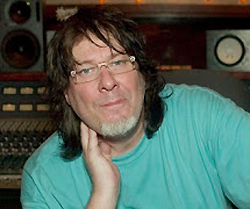
Do you have any listening tricks?
Andy Johns: Obviously the idea is to make it work on all systems. You listen on the big speakers, the NS10’s, out in the car, plus your own speakers, then you go home and listen again. This is a lot of work but it’s the only way to go.
The thing is that I don’t care how close you think you’ve got it that night, you take it home and play it back in the morning and every time there are two or three things that you must fix. It’s never happened to me where I’ve come home and said, “That’s it.” You hear it at home and you jump back down to the studio and sure enough, you hear what you hadn’t noticed before on all the systems there. Every system you listen on, the more information you get.
Do you listen in mono much?
Andy Johns: No, but I’ll tell you this, if you’ve got a fantastic stereo mix it will work in mono as well. For example, “Jumpin’ Jack Flash” [by The Rolling Stones] is a stereo mix released in mono. People don’t listen in mono any more but that used to be the big test. It was harder to do and you had to be a bloody expert to make it work. In the old days we did mono mixes first then did a quick one for stereo. We’d spend 8 hours on the mono mix and half an hour on the stereo.
When do you add effects in the mix?
Andy Johns: I have some standard things that I do that more or less always work. I always need a great plate like an EMT 140 and a short 25 to 32 ms delay just in back of the vocal. If it’s kind of a mid tempo tune then I’ll use a longer delay which you don’t hear because it’s subliminal. It doesn’t always have to be timed to the track; sometimes it can go in the hole so you can hear it. I’ve been talked out of putting reverb on electric guitars, but Start Me Up has a gorgeous EMT 140 plate on it. Most studios you go into don’t even have one anymore.
Do you predelay the plate?
Andy Johns: Usually but not always. In the old days like on the Zeppelin stuff, you’ll hear very long predelays on vocals. You know what that was? That was a 3M tape machine, which was originally designed to do video so it had about a 9-inch gap between the heads as opposed to the 2 1/4-inch gap on a Studer or Ampex. Sometimes I’d even put it at 7 1/2 ips.
Another thing we used was the old Binson Echorec. Listen to “When the Levee Breaks.” That was me putting two M160’s [Beyer ribbon microphones] on the second floor with no other microphones at all because I wanted to get John Bonham the way he actually sounded. And it worked! Page would say that he made me do it, but he was down at the pub [laughs]. He did bring me his Binson Echorec for the track though.
Do you prefer analog or digital?
Andy Johns: What I like is the sound that’s coming into the mixer. I don’t want it modified by some tape machine. I’ve always fought with analog. I’ve always fought with vinyl. With digital, the sound that’s coming in is what you get it back. It’s much truer than any analog machine ever was. If you’ve got to smooth out your sound with some analog machine then you’re in trouble to start with. With analog, the noise factor is like a security blanket in that the hiss can cover up some weasely things.
But I hate fighting a machine and I still have to have somebody there with me to help. That’s the part of the job that pisses me off. You’ve now got to be a bloody scientist. Sometimes it makes you too clever for your own good. If you just learn the tune then you’re in tune with the tune. You let it flow through you. Now you might listen to it years later and say, “I think I missed that one.” Or, you might go, “Fucking hell, I wish I was that guy again. That could not be any better. Who was that man?”
Thank you, Andy, for your great sounds! Hopefully you’re back recording Bonzo again.
Bobby Owsinski is an author, producer, music industry veteran and technical consultant who has written numerous books covering all aspects of audio recording. For more information be sure to check out his website and blog.
